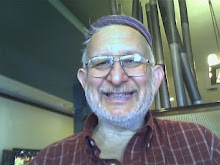Jewish mysticism, like many mysticisms, has deep gnostic roots. Gnosis means true knowledge in Greek. Gnosticism posits the following:
- There are two worlds. This lower world is some kind of fuzzy projection of the upper world of truth. Gnostic philosophies vary from pessimistic to optimistic as a function of how fuzzy or corrupt the projection is. The most famous gnostic philosophy is Plato's world of ideal forms. The relationship of this world to the world of ideal forms is described by the allegory of the cave.
- Appearances are deceiving. The goal of the gnostic is to perceive (experience) the true upper world while living in this world.
- The good news is that gnosis - true knowledge - is possible. Each gnostic path has its practice or method of achieving gnosis.
- Dualism: This world is a broken projection of the world of truth - olam ha-emet. Isaac Bashevis Singer uses this term in his Kabbalah-soaked stories.
- Non-dualism: It's all God. As the Zohar Chadash puts it: "You (God) fill all the cosmoi, and at the same time surround all the cosmoi (like a mother embracing her child), and without You there is no reality whatsoever at all!"
broken shards. No wonder we feel the way we do. No wonder, we feel broken, despairing, depressed, with a gaping hole in the middle of us, a yearning that nothing - it seems - can fill.
We are feeling nothing less than the broken-ness of God! Our broken-ness and God's broken-ness are one.
And yet ... each shard contains sacred sparks of divinity that yearn to re-connect in one-ness to their divine Source. Our job is not to wallow in despair and depression, saying: it is impossible to put the vessels back together, to repair the cosmos to its divinely planned perfection. Indeed, this very despair is the work of the sitra achra - the dark side.
Rather, say: Each one of us has come into the universe to perform a sacred task of repair (tikkun) that I and only I can do. I am a partner with God in the creation and restoration of the universe. God needs me to do my job. God needs us individually and collectively to unite the shattered pieces of the vessels, to unify (yichud) God!
To summarize, let's get back to the structure of the back of the match-book:
- The existential problem
- The solution
- The path (practice) for getting there
- The problem: We feel broken, we feel that the whole universe is a broken place.
- The solution: Find and do your tikkun, your sacred task that you and you alone can perform in stitching up a rip in the fabric of the universe. As my teacher Rabbi Steve Fisdel teaches: it doesn't matter if you start by fixing a rip out there in the world or a rip in your own heart. To repair the one is to repair the other. Despite appearances, the path of transcendence and the path of immanence are one.
- The path to tikkun. This is big subject and I will deal with it - bli neder (G!d willing) in an up-coming blog post.
I will argue that this world view, or something like it, is the basis for much of Judaism, Christianity and Buddhism .. and who knows what else. I will want to explore the match-book-cover rationale for Christianity and Buddhism in up-coming blog posts. And, famously, this world view of broken-ness is precisely the under-pinning of every twelve step program, where broken-ness manifests itself as addiction.
Just to remind myself, I also want to explore the rationale for Jewish twelve step groups.
Happy end of Chanukkah, shalom uvrachah - peace and blessings.

No comments:
Post a Comment